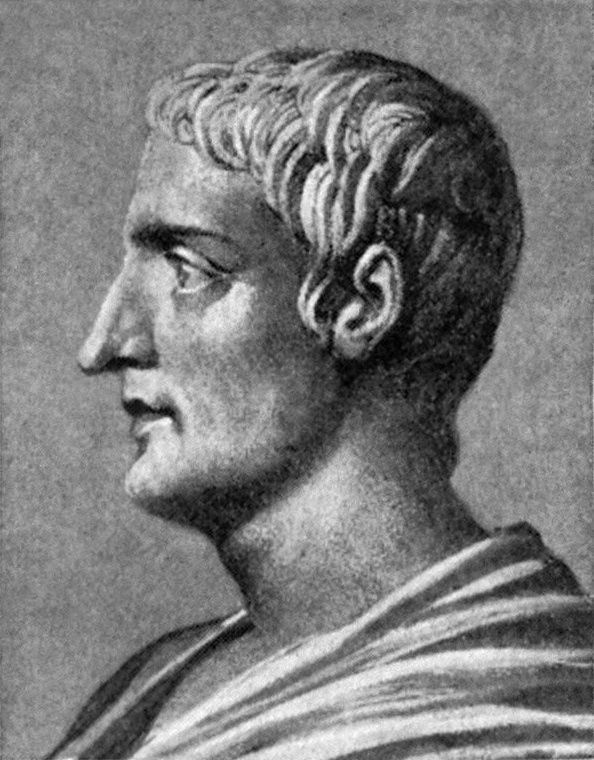Although some Danish roads are pretty straight, the Roman Empire never made it quite this far. Nevertheless, that sophisticated superpower left its mark even here.
The Pre-Roman Iron Age
Bronze Age people had to rely on imports of copper and tin to produce their bronze, but with the advent of iron, the erstwhile people of Denmark could exploit their natural resources. Iron ore was recovered from bogs and smelted into superior versions of the many objects that had previously been rendered in bronze, like swords and ploughshares.
This period in Scandinavia’s history is often called ‘the Findless Age’ for obvious reasons, but nevertheless, evidence from Bornholm shows that during this period (about 400 to 100 BC), the inhabitants of Denmark were busily advancing up the technological evolutionary ladder.
Perhaps because of the paucity of evidence, it is easy to imagine that Iron Age people were basic and uncultured, but it is clear they lived in sophisticated, interconnected societies. Some skeletons from this period reveal Arabic DNA, whilst Celtic influence is plentiful throughout the region at this time.
Gundestrup Cauldron
Perhaps the best example of cultural exchange from the period is the famous Gundestrup Cauldron. This richly-decorated silver vessel from the second or first century BC was found in a peat bog near Gundestrup in Himmerland in 1891. The decorations on the sides of the cauldron depict Celtic deities and rituals, and because of these, and the size of the vessel (diameter 69cm, height 42cm, weight 9kg!), scholars believe it was used in druidic sacrifices.
Silver was virtually unknown in Denmark when the cauldron arrived in the country, but the style and techniques suggest it was produced in the southern Balkans by Thracians, a long-lost people who specialised in luxurious silverware.
The Vikings and the Romans
It was around the time that a certain Mr Jesus H Christ was born that the interaction between Denmark and the rapidly expanding Roman Empire began to intensify. With borders on the edge of the Rhine only a few hundred kilometres away, this Iron Age superpower brought Denmark into its orbit, with profound consequences.
Many important traditions that would characterise the Viking Age were originally assimilated from Roman practices – although through cultural osmosis rather than direct colonisation. These included the concept of the Danish regions as loosely-allied, equal political units; the ‘ting’, a regularly-scheduled civic meeting; a social code balancing civilians with the military hierarchy; and an entrenched tradition of long-distance trade.
It also seems as though those most Scandinavian of artefacts – runes – in fact resulted from Roman inspiration, since they first appear between the second and third centuries AD, after centuries of interaction with the Romans. The runic alphabet shows such striking similarities to Latin and other southern European ones that there is little possibility of it being coincidental.
Roman objects appear increasingly in archaeological excavations from the first century onwards, from which time it seems that small societies were based upon a prestige-goods economy. Prestige goods are non-utilitarian objects that are indispensable for social and political relations: they act like a currency and support the social order.
Cargo cult
Imports of Roman weapons, ornaments, and feasting and drinking equipment were highly prized and traded for leather, fur, meat, cloth and probably slaves. In Denmark, personal reputation and power were synonymous with the ability and degree to which one could control and own Roman goods.
The term ‘cargo cult’ arose to describe similar recent practices on Pacific islands, whereby ‘cargo’ that was made elsewhere and subsequently washed up, was revered and traded amongst indigenous peoples as powerful status symbols.
Such a system works when the flow of goods is controlled by an elite minority who, in return for sharing prestige goods with lower-level elites (to legitimise themselves), received tribute in the form of livestock, grain and other supplies. Meanwhile the lower-level elite extracted ‘taxes’ from farmers in return for defending them, upholding the law and overseeing ritual activities – the same raison d’être for governments to this day.
According to scholars, it is even possible that members of Denmark’s contemporary warrior-aristocracy served in the Roman army. However, as with a lot of theories about this time, it’s ultimately conjecture, as remarkably little is known with certainty.
Tacitus: a historian’s historian
The Roman politician and historian Tacitus documented some regional aspects of the period, although he was more generally describing the pan-German area than Denmark alone. In ‘Germania’, in around 98 AD, he describes societies in which leaders lacked unlimited power and required the assent of an assembly to make decisions. He also noted that other levelling mechanisms, such as extravagant feasting and the distribution of treasure to followers, kept a balance of power. Several small chiefdoms operating on these principles competed, interacting via the exchange of Roman goods. Centres of power arose on the large, defensible, fertile regions: in bountiful Scania and Halland, and in Jutland, where it was agriculturally poorer but ideal for cattle.
According to Tacitus, in times of warfare with “outsiders”, a single warlord would be selected to lead collectively, but for short periods. The leader therefore required the support of his peers, including women in some cases. If an ambitious leader gained too much power, the social code actively encouraged his assassination.
At this time, hereditary rule had yet to be established, and instead all contenders had to prove themselves, leading to a degree of upward mobility in society. It would be one of the greatest changes during the later Viking Age that would see this system replaced by a more powerful, centralised leadership and the ascribed inheritance of power.













